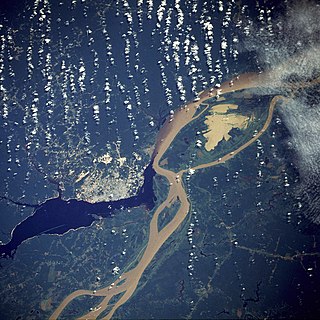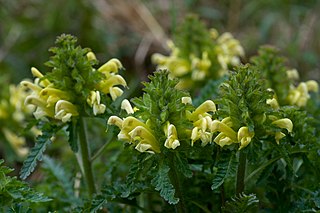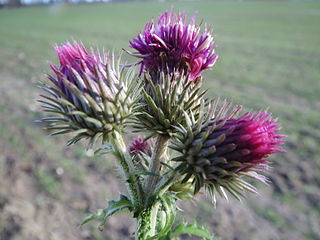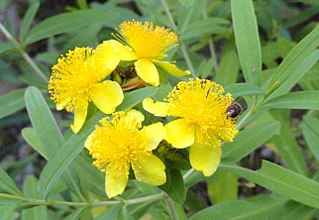This glossary of ecology is a list of definitions of terms and concepts in ecology and related fields. For more specific definitions from other glossaries related to ecology, see Glossary of biology, Glossary of evolutionary biology, and Glossary of environmental science.

The National Estuarine Research Reserve System is a network of 29 protected areas established by partnerships between the National Oceanic and Atmospheric Administration (NOAA) and coastal states. The reserves represent different biogeographic regions of the United States. The National Estuarine Research Reserve System protects more than 1.3 million acres of coastal and estuarine habitats for long-term research, water-quality monitoring, education, and coastal stewardship.

Restoration ecology is the scientific study supporting the practice of ecological restoration, which is the practice of renewing and restoring degraded, damaged, or destroyed ecosystems and habitats in the environment by active human intervention and action. Effective restoration requires an explicit goal or policy, preferably an unambiguous one that is articulated, accepted, and codified. Restoration goals reflect societal choices from among competing policy priorities, but extracting such goals is typically contentious and politically challenging.

The Biological Dynamics of Forest Fragments Project is a large-scale ecological experiment looking at the effects of habitat fragmentation on tropical rainforest. The experiment which was established in 1979 is located near Manaus in the Brazilian Amazon rainforest. The project is jointly managed by the Amazon Biodiversity Center and the Brazilian Institute for Research in the Amazon (INPA).

Native plants are plants indigenous to a given area in geologic time. This includes plants that have developed, occur naturally, or existed for many years in an area.

Pedicularis canadensis, commonly called Canadian lousewort or wood betony, is a flowering plant in the family Orobanchaceae. It is native to North America, where it is found in southeastern Canada, the eastern United States, and eastern Mexico. It has a wide-ranging natural habitat, being found in mesic to dry, forests, woodlands, and prairies.
Biological integrity is associated with how "pristine" an environment is and its function relative to the potential or original state of an ecosystem before human alterations were imposed. Biological integrity is built on the assumption that a decline in the values of an ecosystem's functions are primarily caused by human activity or alterations. The more an environment and its original processes are altered, the less biological integrity it holds for the community as a whole. If these processes were to change over time naturally, without human influence, the integrity of the ecosystem would remain intact. The integrity of the ecosystem relies heavily on the processes that occur within it because those determine what organisms can inhabit an area and the complexities of their interactions. Most of the applications of the notion of biological integrity have addressed aquatic environments, but there have been efforts to apply the concept to terrestrial environments. Determining the pristine condition of the ecosystem is in theory scientifically derived, but deciding which of the many possible states or conditions of an ecosystem is the appropriate or desirable goal is a political or policy decision and is typically the focus of policy and political disagreements. Ecosystem health is a related concept but differs from biological integrity in that the "desired condition" of the ecosystem or environment is explicitly based on the values or priorities of society.
The following outline is provided as an overview of and topical guide to ecology:

A biodiversity action plan (BAP) is an internationally recognized program addressing threatened species and habitats and is designed to protect and restore biological systems. The original impetus for these plans derives from the 1992 Convention on Biological Diversity (CBD). As of 2009, 191 countries have ratified the CBD, but only a fraction of these have developed substantive BAP documents.

Asclepias amplexicaulis, the blunt-leaved milkweed, clasping milkweed, or sand milkweed, is a species of flowering plant in the subfamily Asclepiadoideae (Apocynaceae). It is endemic to the United States, where it is mostly found east of the Great Plains. It grows in dry prairies, savannas, open woods, and fallow fields, usually in sandy soil.

Carduus acanthoides, known as the spiny plumeless thistle, welted thistle, or plumeless thistle, is a biennial plant species of thistle in the sunflower family (Asteraceae). The plant is native to Europe and Asia and introduced in many other areas, where it is sometimes considered an invasive species.

Hypericum kalmianum, commonly called Kalm's St. Johns wort or Kalm's St. Johnswort, is a flowering plant in the St. John's wort family Hypericaceae. It is native to the Great Lakes region in the northern United States and southern Canada. Hypericum kalmianum was named after its discoverer, Swedish botanist Pehr Kalm (1715-1779).
Floristic Quality Assessment (FQA) is a tool used to assess an area's ecological integrity based on its plant species composition. Floristic Quality Assessment was originally developed in order to assess the likelihood that impacts to an area "would be irreversible or irretrievable...to make standard comparisons among various open land areas, to set conservation priorities, and to monitor site management or restoration efforts." The concept was developed by Gerould Wilhelm in the 1970s in a report on the natural lands of Kane County, Illinois and codified for the Chicago Region in 1979.
Dr. Gerould S. Wilhelm (1948–) is an American botanist and lichenologist. He is known as author of several floras of the Chicago Region and the development of the Floristic Quality Assessment methodology, a tool to assess the integrity of natural areas. He is the Director of Research at Conservation Research Institute, a nonprofit organization "dedicated to the promotion of planning, design, restoration, and long-term management of sustainable ecological systems in built and natural environments through applied research, education, and outreach."

Alien species, or species that are not native, invade habitats and alter ecosystems around the world. Invasive species are only considered invasive if they are able to survive and sustain themselves in their new environment. A habitat and the environment around it has natural flaws that make them vulnerable to invasive species. The level of vulnerability a habitat is to invasions from outside species is defined as its invasibility. One must be careful not to get this confused with invasiveness, which relates to the species itself and its ability to invade an ecosystem.
Dr. Floyd Allen Swink (1921-2000) was an American botanist, teacher of natural history, and author of several floras of the Chicago region.
A reference ecosystem, also known as an ecological reference, is a "community of organisms able to act as a model or benchmark for restoration." Reference ecosystems usually include remnant natural areas which have not been degraded by human activities such as agriculture, logging, development, fire suppression, or non-native species invasion. Reference ecosystems are ideally complete with natural flora, fauna, abiotic elements, and ecological functions, processes, and successional states. Multiple reference ecosystems may be pieced together to form the model upon which an ecological restoration project may be based.
Stephen Packard is an American conservationist, author, and ecological restoration practitioner active in the Chicago area.

Dichanthelium leibergii, known as variously as Leiberg's panicum, Leiberg's panicgrass, Leiberg's rosette grass, and prairie panic grass is a species of grass native to North America. It was named for its discoverer, John Bernhard Leiberg (1853-1913), a Swedish-born American botanist active in the western United States.

Dasistoma macrophylla, commonly known as mullein foxglove, is a species of flowering plant in the broomrape family. It is monotypic, with no other species in the genus Dasistoma.












